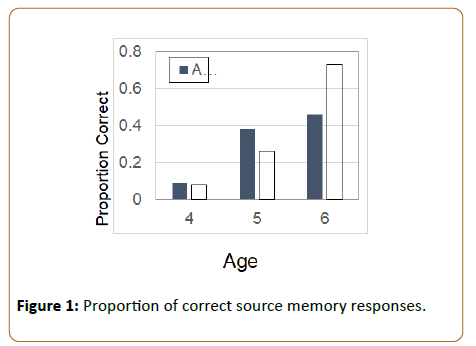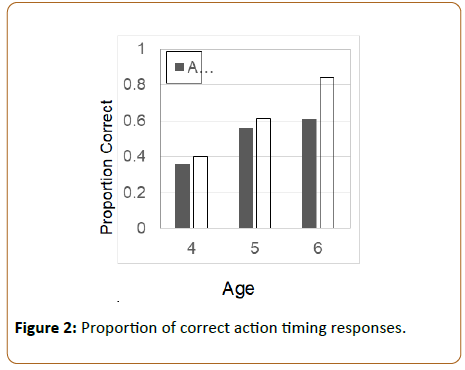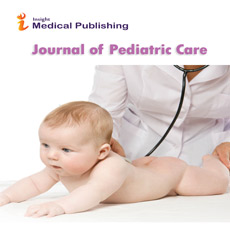Mental Time Travel in Children with ASD
Mika Naito*
Mika Naito*
Department of Pediatrics, Joetsu University of Education, Joetsu, Niigata 943-8512, Japan
- *Corresponding Author:
- Mika Naito Department of Pediatrics, Joetsu University of Education, Joetsu, Niigata 943-8512, Japan E-mail: mikan@juen.ac.jp
Received Date: August 10, 2020; Accepted Date: August 24, 2020; Published Date: August 31, 2020
Citation: Naito M (2020) Mental Time Travel in Children with ASD. J Pediatr Care Vol.6 No.3: 3.DOI: 10.36648/2471-805X.6.3.48
Abstract
Although autistic spectrum disorder (ASD) is characterized by impaired social communication and restricted repetitive behaviors and interests, its symptomatology further extends to a variety of domains. One such domain is memory. Introducing our data from preschool children with ASD, this article reviews the mnemonic difficulties presented by ASD, particularly in episodic memory and its related ability to think about personal future, both of which involve a strong awareness of self-experiencing in time. The paper also presents speculations about the development of the self with subjective time in ASD as well as restricted interests in ASD children, which might derive from their self that is stuck in the present time.
Keywords
ASD; Episodic memory; Episodic future thinking; Mental time travel
Introduction
Abnormalities in Episodic Thinking in Individuals with ASD
The consensus holds that individuals with ASD show profound difficulties in episodic memory, particularly with the awareness of self-experience called autonoetic consciousness [1]. Typical episodic memory profiles in ASD include reduced “remembering” responses in episodic memory retrieval, a lack of self-referential effects-the facilitated memory for self-related information, confusion between self-experienced and other experienced or unexperienced events, and impaired autobiographical memory [2]. In particular, their autobiographical memory lacks the reminiscence bump, that is, increased memories of personal events recalled from adolescence and early adulthood, which serves an important function in constructing the self-concept [3]. Clinical observations also reveal frequent instances of specific mnemonic symptoms such as the “time-slip” phenomenon, an abrupt, de-contextualized re-experience of remote trivial events [4], and superb mechanical rote memory of meaningless information such as bus routes and timetables. These abnormalities share common features in episodic memory deficits firmly associated with a meaningful context of time and space, that is, self-experience of personal events with a subjective perspective of time.
Episodic memory is phenomenologically, neurologically, and developmentally related to episodic future-thinking/foresight, or the ability to pre-experience events in one’s personal future [5]. The ability to think about both one’s personal past and future with autonoetic consciousness has also been called mental time travel [1,6,7]. Some researchers have claimed that mnemonic abnormalities derive partially from attenuated conceptions of the self; in particular, a form of self-concept that is temporally extended from the present to the past and future, enabling one to relive and pre-experience personal events by mentally travelling through subjective time [1,8].
Development of episodic thinking in children with ASD
Although the claim has been supported by research with ASD adults who show impaired episodic foresight similar to their impaired episodic memory [9], evidence from children with ASD has been inconclusive. Despite solid evidence of the early onset of, and the developmental link between, both abilities in typically developing (TD) children [10], only school-age children with ASD have been studied solely to show their attenuated episodic foresight with no examination of episodic memory or its relation to foresight [11-13]. Reasons for the research imbalance have come from a lack of adequate measures of both abilities for young children and the confounding effects of verbal and non-verbal intelligence on children’s episodic foresight.
To examine the early development of episodic foresight and its relation to memory, [14] tested high-functioning preschool children, aged 4 to 6 years, with and without ASD on source memory and a task of future action timing. Source memory gauged episodic memory with autonoetic awareness by requiring children to remember when and where they learned a new piece of information [7]. In contrast, it is rather difficult to measure episodic foresight since, for example, verbal questioning about children’s personal future events should often induce responses of schematic and daily event knowledge (called scripts). Naito et al. used the action timing task [10], which requires children to decide the timing of the actions necessary to prepare for a future, script-free event they would experience through anticipation of their potential need. The children were also assessed on their receptive vocabulary (verbal intelligence) and Raven’s Colored Progressive Matrices (RCPM; nonverbal intelligence).
As illustrated in Figure 1, the ASD preschoolers found it difficult to remember the sources of their knowledge at 4 years of age and improved until the age of 5 just as TD children; however, their source memory did not improve anymore at 6 years of age, at which time their memory was significantly lower than their TD counterparts. Figure 2 demonstrates that the ASD children were less capable than the TD children of anticipating the action timing for future events across their preschool years. Furthermore, although source memory and action timing scores were unrelated in both groups of children until the age of 5, they were associated with each other in the TD 6-year-olds even after controlling for their age and verbal intelligence (r=0.44), whereas they were still unrelated in the ASD children of the same age (r=0.13). Interestingly, nonverbal intelligence gauged by RCPM, which is a more impartial index across clinical populations than a composite IQ score for both verbal and nonverbal intelligence, showed an association particularly with episodic foresight in the TD 6-year-olds (r=0.45), whereas it did not do so in their ASD counterparts (r=-0.03).
The results corroborated that the ASD preschoolers’ episodic memory and foresight abilities are both attenuated, and that episodic foresight, which is also associated with non-verbal intelligence, is integrated with episodic memory during preschool years in typical development but not in ASD. The reduced episodic memory and memory confusions, such as the time-slip phenomenon observed even in adults with ASD, should hence be rooted in their early childhood, which is impacted from the impaired development of episodic thinking about the past and future and the failure of its integration unlinked to their intelligence.
Neural Foundations of Episodic Thinking
Literature on adult memory has shown that episodic thinking about the past and future has a strong neurological association with each other, as mentioned earlier. Episodic foresight shares common neural foundations with episodic memory, such as medial and lateral temporal lobes (the hippocampus and parahippocampal gyrus), the posterior cingulate gyrus (including retrosplenial and precuneus), and medial and dorsolateral prefrontal cortex [15]. Such neurological commonalities have led researchers to hypothesize that episodic future thinking is meant to construct and simulate future events through flexible recombination of remembered past experiences [16], to construct future event scenes through experienced past event scenes [17], and to be a form of self-projection of present perspectives onto other perspectives, such as the past and future and another person or place [18]. In particular, the selfprojection hypothesis would accord with the fact that individuals with ASD show difficulty in perspective taking of another person (i.e., theory of mind), in imaginations not restricted to future anticipation, and in spatial perception, such as a sense of distance.
However, the hypotheses including self-projection appear to fall short of considering the matter of temporality that locates the self onto the axis of time [1]. The mental time travel underlying episodic memory and foresight is not just to shift the present perspective to something else or to construct the image of the event scenes. Rather, it involves the consciousness of the self that is located on the temporal axis relative to the present, extends toward the past and future freely, and is also continuous and consistent to the present self.
The Self and Mental Time Travel in ASD: A Speculation about Reduced Episodic and Restricted Thinking
Memory confusions, such as the time-slip phenomenon and the attenuated episodic thinking, clinically and experimentally observed in individuals with ASD, can therefore be attributed to reductions in their ability of mental time travel. They would have abnormalities in autonoetic, self-experiencing consciousness that combines the past, present, and future into a meaningful continuum and puts the self onto continuous time relative to the present. They should find it too difficult to travel through subjective time to relive their personal past and pre-experience their personal future.
As the close neurological connections between episodic memory and foresight show, deficits in episodic thinking in ASD are likely to originate from the abnormal, reduced connectivity of the subcortical areas, probably centered in the hippocampus and the surrounding areas, to the cortical areas. On the other hand, there has been no evidence of a specific area or neural network in the brain that is correlated with the self, self-concept, or related information [19]. Thus, in the case of ASD, a consequence of abnormalities in the neurological connections between memory and future thinking may emerge as impairments in the autonoetic consciousness that accompanies episodic thinking (i.e., mental time travel).
Furthermore, it might also be speculated that their restricted behaviors and interests that characterize ASD also arise from their impairments in anticipating the situations that are not “here and now.” That is, with the self that is bound to the here and now, the difficulties in anticipating or pre-experiencing other hypothetical situations, particularly situations that would occur later in the personal future, might emerge as a pattern of thought and behaviors that are restricted to the present self. The inability to connect the past to the future in a meaningful way and to locate the self adequately on the temporal stream may underlie not only mnemonic abnormalities but also the restricted thought and behaviors of ASD. Through development under the constraints of the preferences for sameness and invariability, ASD deficits in the autonoetic consciousness based on temporality, in tandem with those in self-awareness based on inter subjectivity or otherness, may lead to difficulties in and anxieties about imagining and anticipating things and events that are unpredictable or do not exist here and now. This, in turn, might result in restricted behaviors and interests. In fact, the older and/or the more high-functioning the ASD children are, the more conspicuous the characteristics of insistence on sameness are among their restricted and repetitive behaviors [20]. Furthermore, it has been demonstrated that the degree of this symptom is correlated with structural (magnitude) covariance of the subcortical connections, including the hippocampus, amygdala, and basal ganglia, and that of their connections to the cortical areas [21]. This suggests the possibility that the dysfunctional connections between cortical and subcortical areas resulting in restricted interests and thought may overlap the dysfunctional neural networks for memory and future thinking.
However, development is, of course, not determined solely by the child on their own; developmental constraints not only affect the environment where the child is fostered but are also crucially influenced by the environment. Therefore, needless to say, how the child is reared constitutes a close link with each of the ASD symptoms and their respective clinical pictures. Whether the present discussion is reasonable awaits further study from the perspective of child development through the interaction between the child and their environment.
References
- Tulving E (2002) Episodic memory: From mind to brain. Annu Rev Psychol 53:1-25.
- Salmond CH, AshburnerJ, Connelly A, Friston KJ, GadianDJ, et al. (2005) The role of the medial temporal lobe in autistic spectrum disorder. Euro J Neuroscience 22:764-772.
- Crane L, Goddard L (2008) Episodic and semantic autobiographical memory in adults with autism spectrum disorders. J Autism Dev Disord 38: 498-506.
- Tochimoto S, Kurata K, Munesue T (2011) â??Time slipâ?? phenomenon in adolescents and adults with autism spectrum disorders: Case series. Psychiat Clin Neuros 65:381-383
- AtanceC, Oâ??Neill D K (2001) Episodic future thinking. Trends Cogn Sci 5:533-539.
- Suddendorf T, Corballis MC (1997) Mental time travel and the evolution of the human mind. Genet Soc Gen Psychol Monogr 123:133-167.
- Tulving E (2005) Episodic memory and autonoesis:Uniquely human? In HS Terrace & J Metcalfe (Eds.) The missing link in cognition: Origins of self-reflective consciousness. New York: Oxford University Press: 3-56.
- Neisser U (1988) Five kinds of self knowledge. PhilosPsychol1: 35-59.
- Lind SE, Bowler DM (2010) Episodic memory and episodic future thinking in adults with autism. J Abnorm Psychol 119: 896-905.
- Naito M, Suzuki T (2011) â??When did I learn and when shall we act?â?ÃÂ:The developmental relationship between episodic future thinking and memory. J Exp Child Psychol 109: 397-411.
- Hanson LK, Atance CM (2014) Episodic foresight in autism spectrum disorder. J Autism Dev Disord 44: 474-684.
- Marini A, Ferretti F, Chiera A, Magni R, Adornetti I, et al. (2016) Self-based and mechanical-based future thinking in children with autism spectrum disorder. J Autism Dev Disord 46: 3353-3360.
- Terrett G, Rendell PG, Raponi-Sauders S, Henry JD, Bailey PE, et al. (2013) Episodic future thinking in children with autism spectrum disorder. J Autism Dev Disord 43: 2558-2568.
- Naito M, Hotta C, Toichi M (2020) Development of episodic memory and foresight in high-functioning preschoolers with ASD. J Autism Dev Disord 50: 529-539.
- Benoit RG, Schacter DL (2015) Specifying the core network supporting episodic simulation and episodic memory by activation likelihood estimation. Neuropsychologia: 75: 450-457.
- Schacter D, Addis DR (2007) The cognitive neuroscience of constructive memory: Remembering the past and imagining the future. Philos Trans R SocLond B BiolSci 362: 773-786.
- Hassabis D, Maguire EA (2007) Deconstructing episodic memory with construction. Trends Cogn Sci 11: 299-306.
- Buckner RL, Carroll DC (2006) Self-projection and the brain. Trends Cogn Sci 11: 49-57.
- Gillihan SJ, Farah MJ (2005) Is self special?:A critical review of evidence from experimental psychology and cognitive neuroscience. Psychol Bull 131: 76-97.
- Jiujias M, Kelly E, Hall L (2017) Restricted, repetitive behaviors in autism spectrum disorder and obsessive-compulsive disorder: A comparative review. Child Psychiatry Hum Dev 48: 944-959.
- Eisenberg IW, Wallace GL, Kenworthy L, Gotts SJ, Martin A (2015) Insistence on sameness relates to increased covariance of gray matter structure in autism spectrum disorder. Mol Autism 6: 54.
Open Access Journals
- Aquaculture & Veterinary Science
- Chemistry & Chemical Sciences
- Clinical Sciences
- Engineering
- General Science
- Genetics & Molecular Biology
- Health Care & Nursing
- Immunology & Microbiology
- Materials Science
- Mathematics & Physics
- Medical Sciences
- Neurology & Psychiatry
- Oncology & Cancer Science
- Pharmaceutical Sciences


